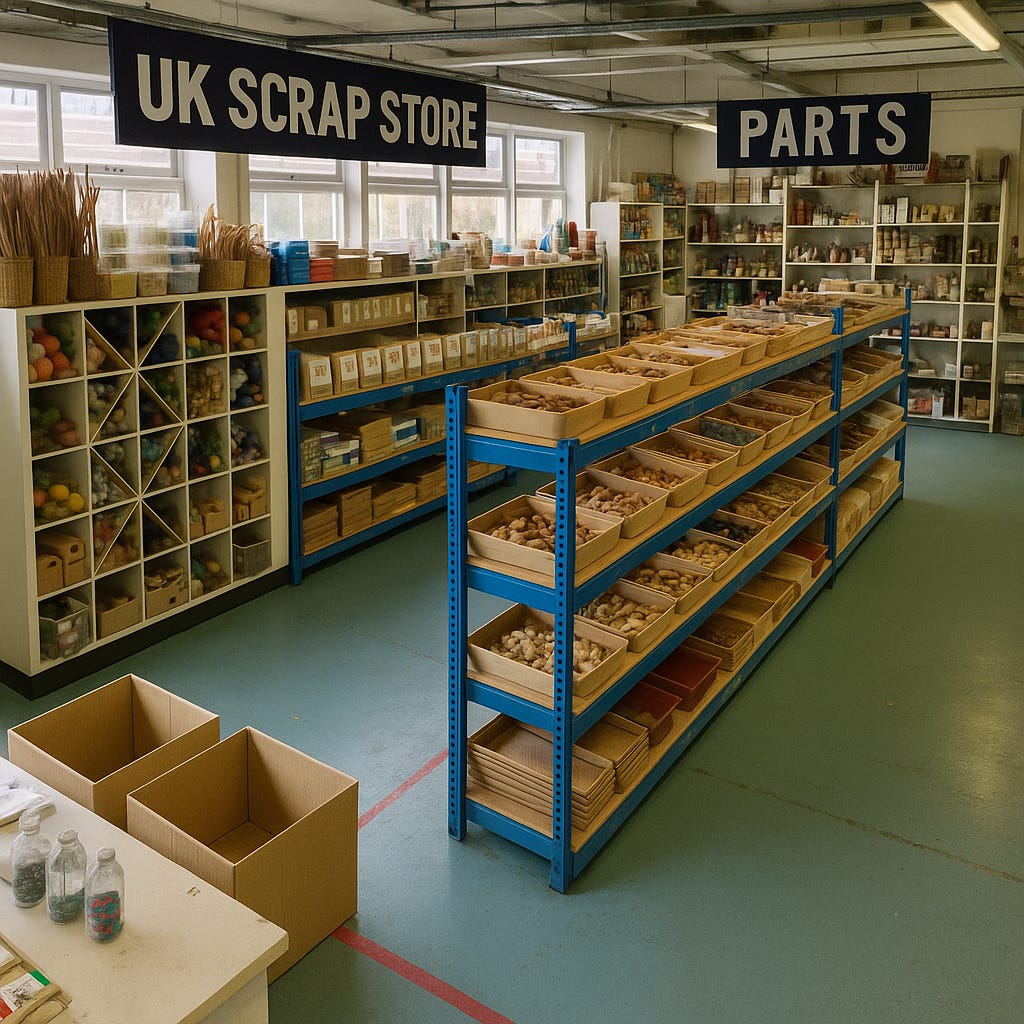Beyond the Shelf: What If Montessori Is Not Pretty?
Following the Child into the Future, Not the Manual
As the 2025–2026 school year begins, Montessori environments everywhere begin to hum, polished wood, fresh linens, sensorial beauty lined up in rows. The rituals of preparation return. But in the quiet spaces between the trays, another invitation whispers, a deeper one. What if the shelf is not enough? What if Montessori is not meant to be pretty?
We speak of following the child, and yet how often do we manage them with our aesthetic, our recordkeeping, our quiet need to show that learning is occurring? We do not give grades, but we give gentle nudges, visual cues, subtle structures. Even the most prepared environments sometimes reflect our longing for control more than the child’s longing for purpose.
There are children in our rooms who will walk past the multi-colored pom-poms, past the color-coded trays, past our seasonal provocations. They are not uninterested. They are oriented toward something deeper. There is a child who will happily spend their morning dismantling a broken calculator. They will trace each part, sketch each gear, and ask nothing of us but space. Another will quietly construct a cardboard structure that mirrors their home, saying, “I want to understand to make this look real.” This is not deviation from the curriculum. This is the curriculum, if we are still brave enough to name it that.
The prepared environment is not always made of maple wood and watercolor palettes. Sometimes, it is a table scattered with scraps and wire, old remote controls, salvaged tools, and raw materials that demand imagination more than instruction. In the UK scrap stores of my children’s childhood, vast warehouses filled with discarded remnants from local industries were their playgrounds. We would go together after school, on weekends, or in the holidays. They would pick up a large empty box each at the front door of the warehouse, and then they would go shopping. They would gather treasures from bins full of foam shapes, empty thread spool, leather off-cuts, plastic tubes, aluminum bottle-top remnants, and curiously textured fabrics.
These government-run centers, available across the UK, were not pedagogical spaces, but they offered something the curriculum often forgets: wildness, freedom, making. We would return home to cut, glue, arrange, imagine, invent, and paint. There was no lesson plan, no defined outcome, only process. Only presence. That spirit lives again in the growing maker movement that pulses through Montessori communities today.
In Bulgaria, Dr. Desislava Stoeva quietly conducted research with the Casa dei Bambini Montessori preschool and Sofia University. She asked how digital and media literacy can be taught using Montessori’s deepest principles, embodiment, hands-on materials, scientific observation. Her work is not a departure; it is a continuation. Children were invited to create their own devices, code, tell stories, and understand systems, all without abandoning the core of what makes the Montessori method so human.
More recently, the IFTT Tech Team of the 2025 AMS Innovation Labs asked a different question, “What if Montessori environments were not just beautiful, but also brave?”
The IFTT Tech Team: Debbie Adams, Dana Anderson, Pat Barton, Kate Broughton, Sam Gleisten, Aishwarya Sankaranarayanan, Shelley Smith, Ronke Okesola, Katie Torres, Michelle Velho, and Mara Weitzman, were not theorizing from a distance. They were in classrooms, prototyping, failing, testing, observing. They are not asking what Montessori was, but what it might become. Not in contradiction to its roots, but in radical fidelity to them.
Their work can be viewed through this Padlet, which was available to the Montessori Event attendees after the exhibit.
Sarah Kennedy-Berge has created a comprehensive hands-on book: Montessori in the Digital Age, it safely and brilliantly holds open the space between screens and sensorial experience. She does not tell us to turn away from technology, but to meet it wisely, slowly, with the child’s rhythm at the center. And Kim Smith, of Learning Beautiful, reminds us that even the deepest logic of the machine can be made touchable, graspable, and elegant. Her materials speak in words and wood, not plastic or glow. They show that computational thinking can begin with craft. All of these voices are saying the same thing in different dialects, “Trust the child. Trust their orientation toward complexity. Trust their boredom, their defiance, their silence, their seemingly random choices. Trust their hands.”
So this year, what if we cleared one shelf? Removed one pastel tray? And instead placed an unlabeled box full of discarded wires, old phones, broken clocks, textured scraps, odd bits of forgotten tech (obviously safety first)?” What if we gave them screwdrivers that actually work, scissors that cut, glue that sticks, paint that stains, tools that matter? What if we gave them immediate follow up work from the screws and screw drivers, to construct a small bird house from a kit, which sits right next-door on the shelf?
What if we gave them real materials and a long morning and no instructions? What might we find? That the child is still constructing the universe. That the child is already a maker. That Montessori was never about tidiness, but truth. So begin here. And do not look away. Because the world does not need more tidy classrooms. It needs whole humans. And those are still being made.




Oh my gosh, all of this. I have come to the same conclusion. The children need to be free to explore, follow their lead, and connect to the cosmos by entering into it through exploration.